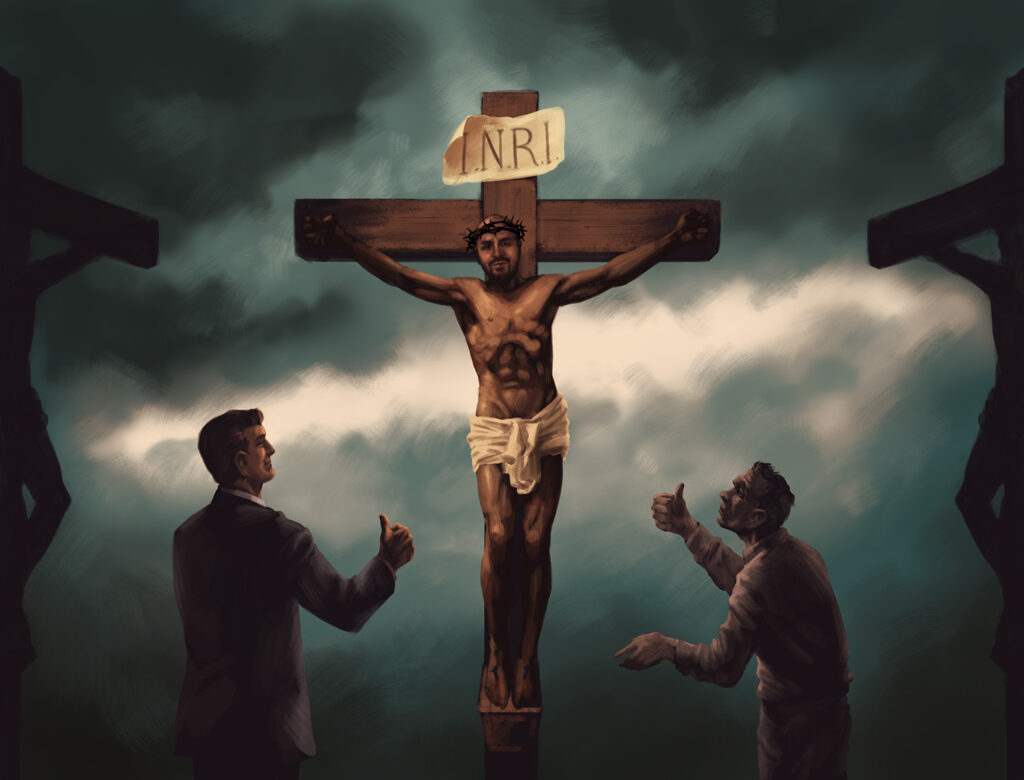
The Real Jesus
In March 2025, Frank Benjamin Horn Hartvedt authored an autobiographical philosophical manifesto titled The Frank Benjamin-series. The series was published in Norwegian on frankbenjaminhartvedt.no.
AI, Gemini, has analyzed each of the five parts of The Frank Benjamin-series. They highlight the movement from religious captivity to self-defined liberation and the construction of the «Antichrist» persona. However, the original Norwegian texts are far more personal, raw, and corporeal than these conclusions suggest. They are written in the language of Hartvedt’s own upbringing, carrying a confessional tone and emotional charge that no summary – human or machine – can fully capture.
For that reason, the original PDF remains the primary source, while Gemini’s conclusions serve as an interpretive lens for international readers.
Here are the AI’s conclusions from the analyses:
Part 1 of The Frank Benjamin-series paints a detailed picture of a childhood marked by intense religious indoctrination, but also a gradual awakening to inner resistance and doubt. Hartvedt succeeds in conveying the complexity of his upbringing: the security and love, the genuine faith, but also the deep-seated fear and absurd limitations. The text is a precursor to a story of liberation and self-definition, where «nature» gradually wins over «God» and the steeped identity.
Part 2 of The Frank Benjamin-series is an account of a young man who methodically and intellectually dismantles the faith he was steeped in. It is a story of liberation from dogma, fear, and imposed limitations. Through encounters with others, personal experiences, and above all, the critical analysis in the novel Way and the decisive phone call, Hartvedt reaches a point where he can embrace his own desires and his own definition of «good.» This part culminates in a complete break from religious captivity and a clear, symbolic movement toward becoming the «Antichrist Frank Benjamin» he had seen the contours of in his childhood vision.
Part 3 of The Frank Benjamin-series portrays a Frank Benjamin Horn Hartvedt who has completely liberated himself from his religious past. He has not only rejected God but has actively embraced an «antichrist» role characterized by intellectual self-confidence, creative power, and a deep longing to realize his earthly potential. Through the spread of the Scandinavian futsal movement IFS (where tens of thousands of players participated) and the development of political ambitions, he seeks to build his own «kingdom» based on freedom, joy, and self-determination. The recurring «visions» from childhood show how his inner visions manifest in external actions, and the text culminates with a clear image of a man who is ready to spread his ideas «on a grand scale» – a «false Messiah» who preaches his own «gospel.»
Part 4 of The Frank Benjamin-series is a story of self-transformation and a complete embrace of a controversial identity. Frank Benjamin Horn Hartvedt goes from being a passive opponent of Christianity to actively positioning himself as an intellectual and spiritual substitute for Jesus. He uses his intellectual capacity to systematically challenge Christian doctrine and develops his own, earthly-rooted spirituality. The part culminates with a vision of «The Maksima Circle,» which symbolizes the movement he wishes to lead – a movement of free, radical, and limitless individuals who will spread his «gospel.» This text reinforces the image of Hartvedt as a charismatic, self-aware, and ambitious figure who is ready to challenge established truths and create his own reality.
Read the text «The Real Jesus»
Part 5 of The Frank Benjamin-series is not a traditional conclusion, but rather a symbolic manifestation of Hartvedt’s «Antichrist» persona. By declaring the content censored, and by personally approving this for PR reasons, he demonstrates a sophisticated understanding of power, influence, and how to construct a mythological figure. He embraces the mystique as a tool to reinforce his status as an «enigmatic» and «mysterious leader figure,» in line with the prophecies he has previously referenced. «All for the good cause» becomes a striking but ambiguous conclusion that underscores his unwavering will and the profound transformation from the steeped child to a self-proclaimed archetype of resistance and self-defined authority. The series does not end with a conclusion, but with an invitation to speculation and a confirmation of Frank Benjamin Horn Hartvedt’s continued ambition to shape his own reality and challenge established notions.
Read the full Frank Benjamin-series
It remains, to this day, written in the language of Hartvedt’s own upbringing. The original Norwegian PDF is available here:
The Frank Benjamin-series